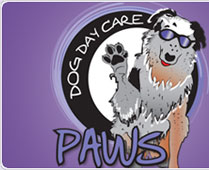Is The Customer Always Right?
If I could pick an issue that could make or break any pet business (or any service-related business) it would have to be customer relations and communication. Many businesses have blindly adopted the motto that “the customer is always right,” and as a result many customers believe that a business should bend over backwards, violate store policy and cater to (in many cases) unreasonable expectations that put pets or staff safety at risk so as they may have their way.
In the pet business the mindset that the customer is “always right” is not always a good practice to follow when we consider that this business deals with the often times unpredictable behavior of an animal while trying to prevent injury to both it and the staff. I have found that the general public is typically very naïve of all that can go wrong and what is needed to safely care for a pet in a professional environment, be it boarding, playing in daycare or being groomed. They have little to know understanding or appreciation for the myriad of ways a pets can hurt themselves, or how they may or may not react to foreign situations. In fact I think that they are generally so naïve that the “customer is always right” would very likely be the exception rather than the rule at a pet care facility.
Which brings us to the question of who is right, which can become a very touchy subject. Some people project their own feelings on their pets. Many wrongfully attempt to emphasize with and attribute to their pets the ability to reason in a human way. As a result they simply are not well enough informed or objective enough to make sound judgments with regards to the welfare and care needed for their pet. Point in case would be the aforementioned pets that are severely matted where the owner wishes to have the coat painfully brushed out and hand de-matted for fear the dog will be upset or embarrassed if its coat is shaved off. Never mind this is an absolute impossibility in many cases as the coat has become so tangled and tightly wound that it is one solid mass covering the entirety of the pets body. On the boarding side you have the again aforementioned situation in which owners wish to place items that can pose a choking hazard in boarding suites overnight with their pet to make them feel more at home. In either situation the owner, most assuredly does not wish to have a dog groomer, facility owner (or anyone else for that matter) tell them what they want is impossible, what they are suggesting could hurt the animal or that they just don’t know what they are talking about.
The only profession even remotely capable of getting away with these sorts of statements would be veterinarians and even they tend to placate as opposed to logically refute unreasonable diagnoses, statements and requests by hypochondriac pet parents. Why? Well if the veterinarian told an owner there was nothing wrong, then the owner will simply go to another veterinarian and get the justification they are seeking. After which they would tell all their friends and associates the first veterinarian had no idea what they were talking about or that they provided horrible service.
The customer would then likely followed this up with some type of negative online review designed to dissuade others from visiting a veterinarian that did nothing wrong and simply noted that the pet was healthy and not in need of medical care. As a result of this no win scenario for veterinarians that choose not to over medicate or placate, most vets will recommend a prescription food, antibiotics or special shampoos for non serious issues that would most likely resolve on their own. This is done primarily for the sake of justifying that owners concerns (medically sound or not) and secondly in order to make a sale. A situation that unfortunately further cements in the minds of pet owners that they are always right when it comes to their pet “needs”.
As pet care facility operators are for the most part wrongfully considered to be less than knowledgeable semi skilled laborers whom must without question perform a customer’s bidding; they often find ourselves in the unfortunate situation of upsetting customers when they refuse a request based on policy or common sense. In the vast majority of cases this is due to the fact that they failed to first understand the type of customer they are dealing with and subsequently the best communication style to use with that type of customer. Most people, unfortunately, do not view doggie daycare or pet resort business owners as the well-trained professional people that they are. This is likely to remain the case until this industry becomes the sort to profession that universally requires school training, internship and state licensing. Because your clients are unlikely to view you as a fully trained professional with years of experience who is well capable of exercising good judgment with regard to the needs and welfare of a pet, you will have to deal with this problem from a slightly different angle.
The longer you are in this business, the more awareness you will develop about just how emotional people become about their pets. It is important to keep this fact in mind when you are dealing with your customers. It is very easy to offend a customer by implying that they don’t know what they are talking about, even if it’s true. Once you have offended the client, you have probably lost their business and you may well have lost the business of several of their friends. It is going to be important to your business that you learn early in your career how to best handle some of the problems you are likely to face in dealing with largely uniformed and highly emotional clientele.
Not Yet Available For Purchase and Download




